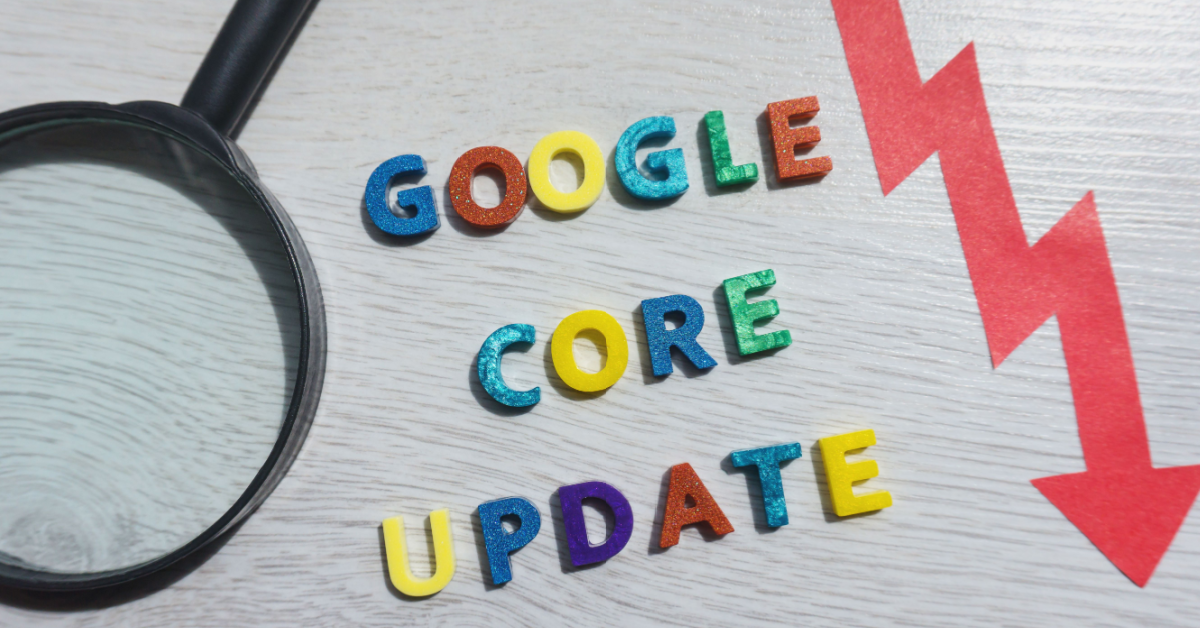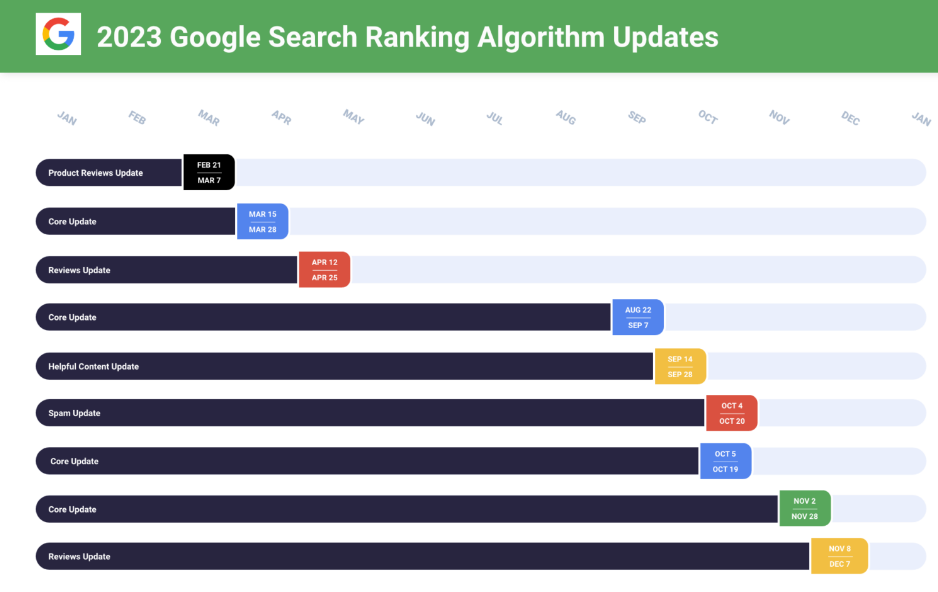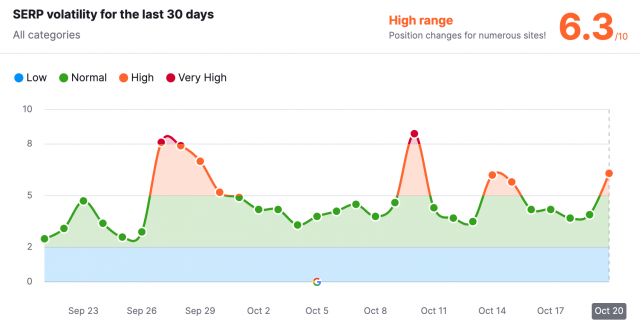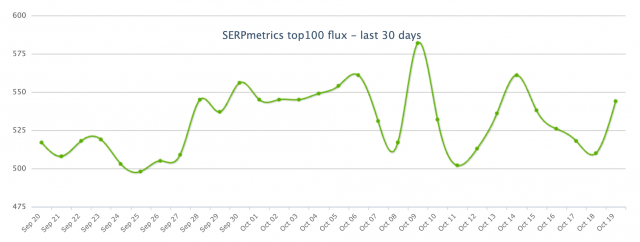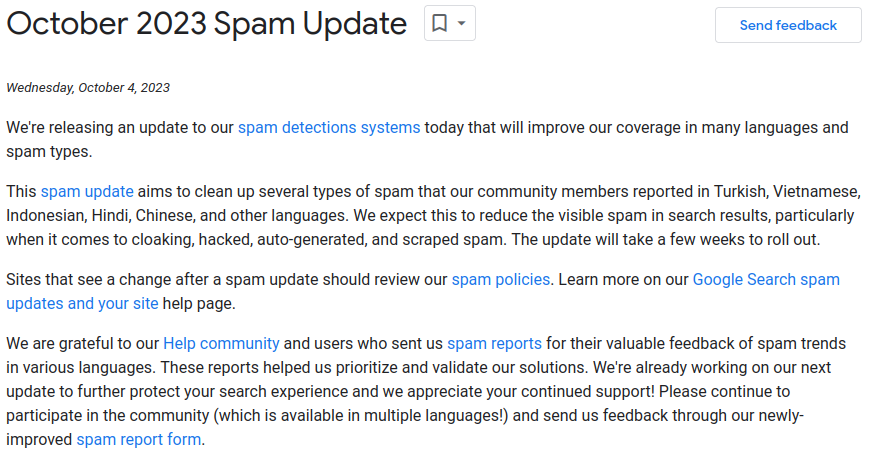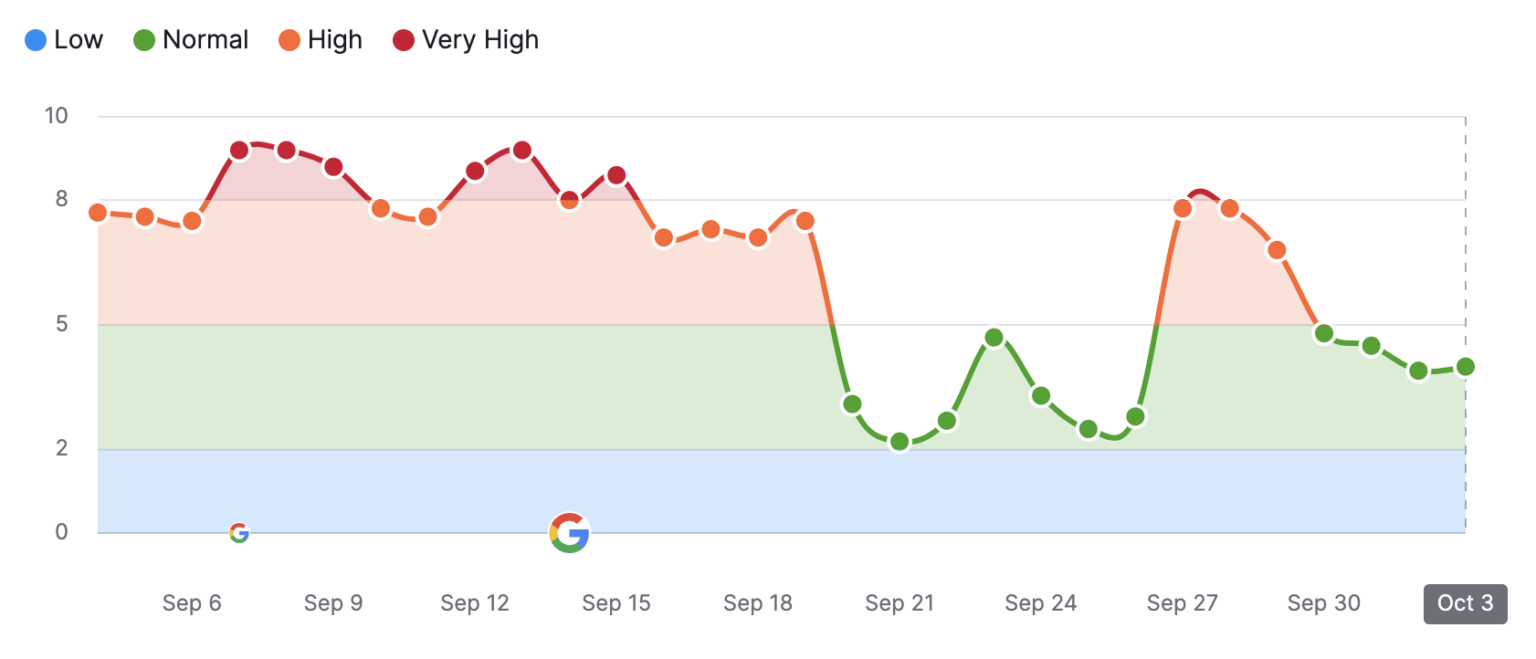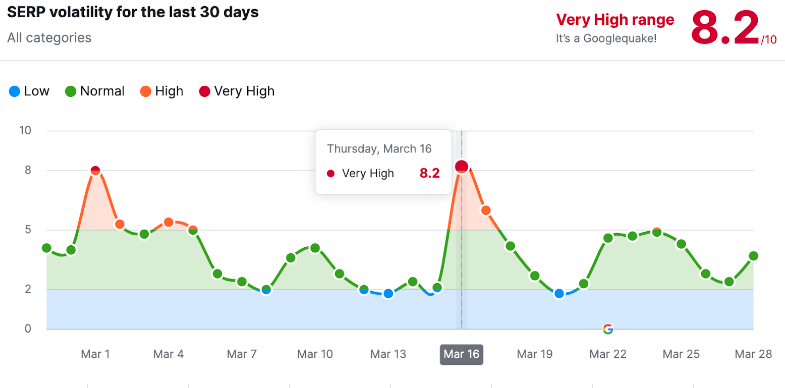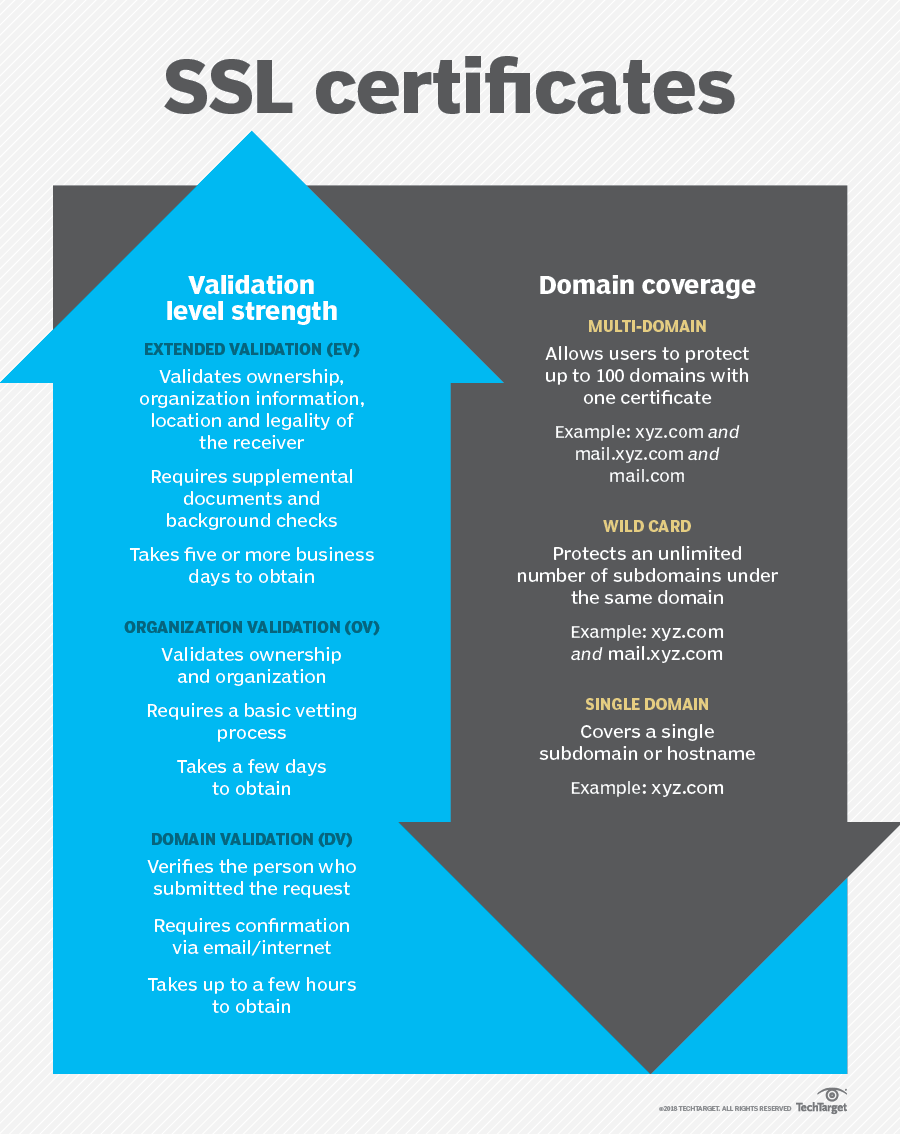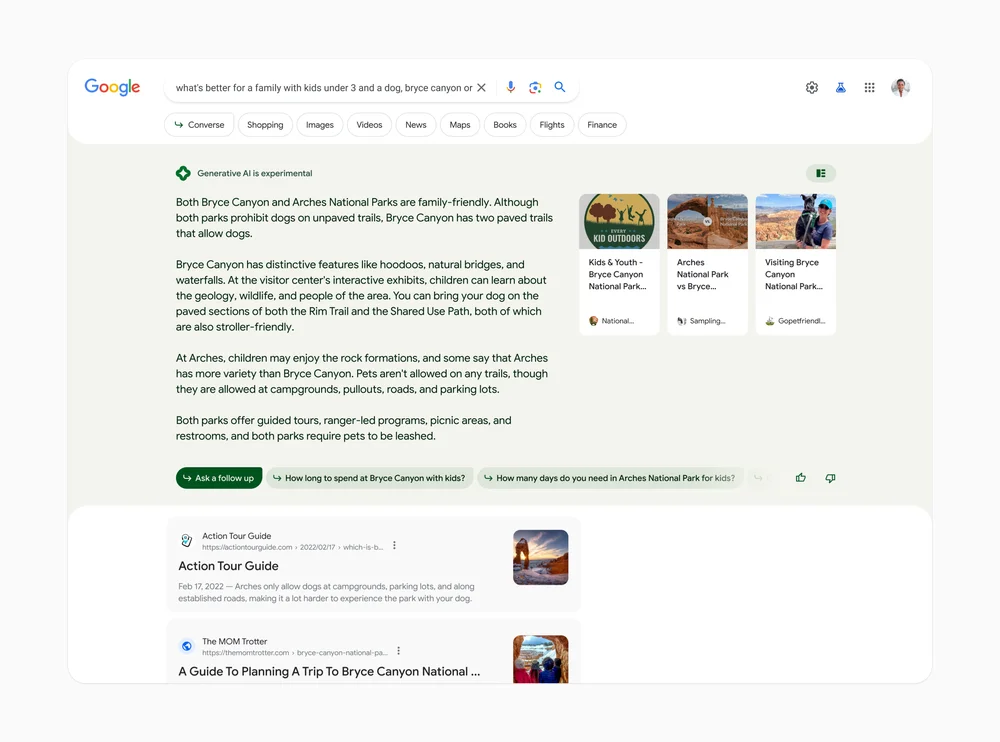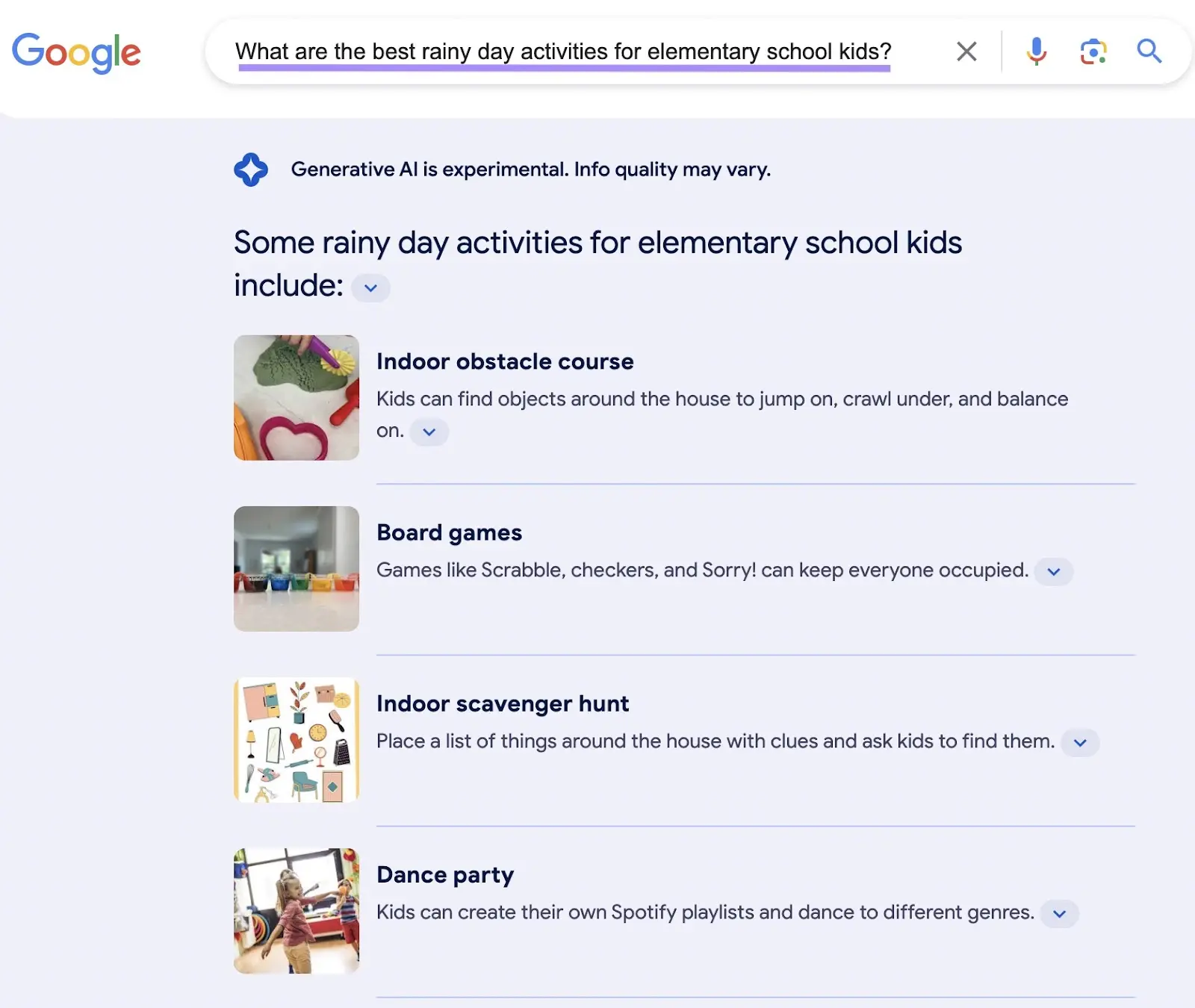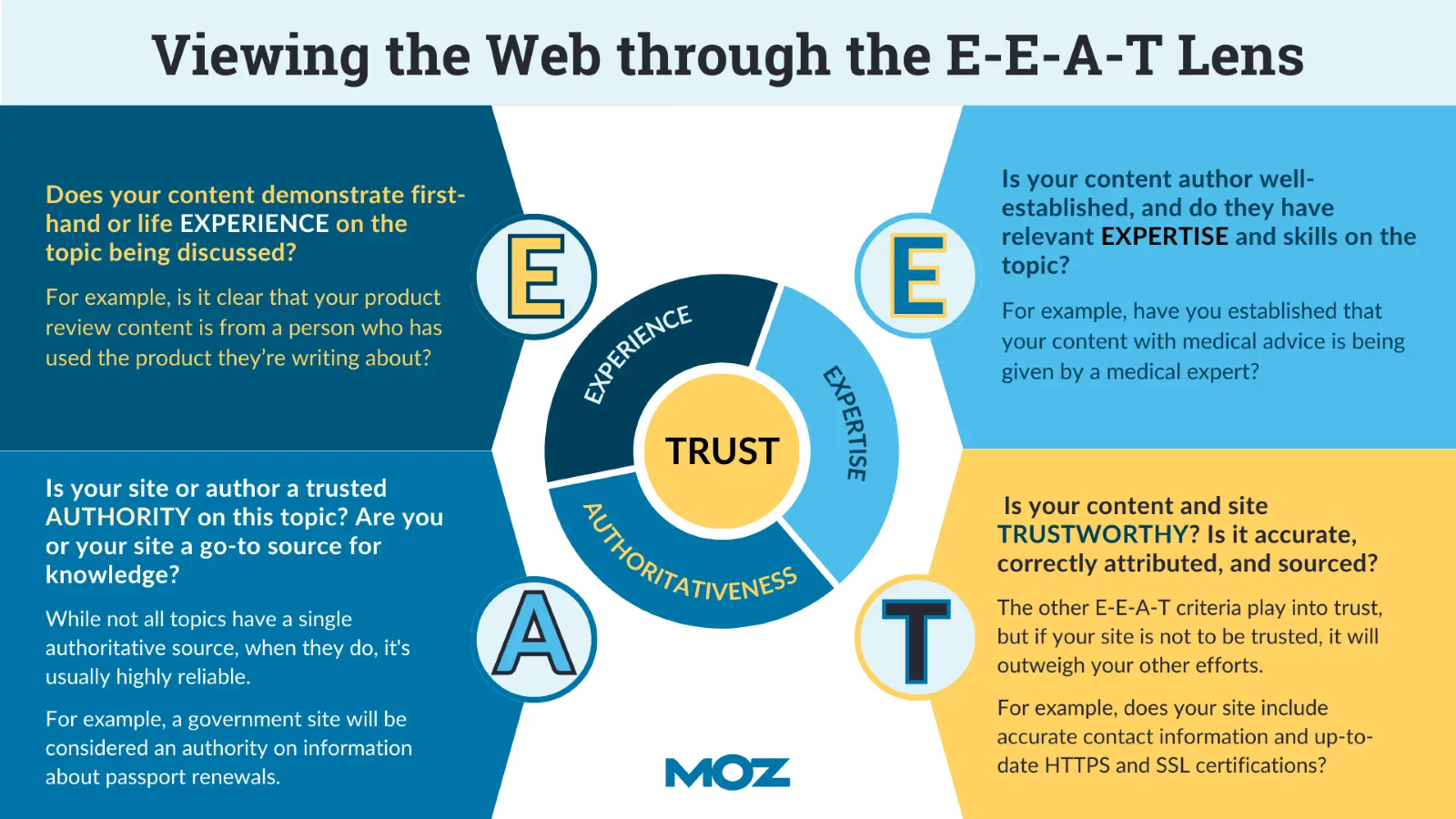Have you ever wondered what goes on backstage to determine our online encounters?
In the changing world of the internet, Google’s 2023 evolution unveils a digital plot twist. How do websites accommodate themselves to this perpetually changing narrative?
This blog extends an invitation—a virtual tour into the unseen currents where algorithms and cybersecurity intersect. It’s a practical investigation that provides a strategic perspective on website impact, safety, and the roadmap into 2024.
Thus, consider this your guide as we delve into the digital chronicles—a navigational instrument that helps you understand the complex relationship between online evolution and the resilience of web entities.
Unveiling Google’s Transformative Updates
Google is updating its search algorithm regularly since shopping behavior, and customer needs change frequently with technology advancement. Being up-to-date with Google algorithm updates is important for marketers and business owners.
These updates have the power to change the overall ranking of a website and also influence its visibility on the SERPs. It’s very important to keep track of the influence these modifications have and analyze their consequences.
Although updates from the core may cause some fluctuation in rankings, staying competitive requires a lot of patience and continual effort in enhancement.
Recap of Major Google Updates in 2023
Let’s plunge into the details of each update, peeling back its layers and seeing what power this update holds to change the course of digital destiny.
November Review Update: Unlocking the Power of Insightful Reviews
Google now understands the significant role of reviews in customers’ preferences and purchase decisions. As per Google’s update in November, the ranking algorithm for reviews is being changed to evaluate the opinionated and critical content of articles, blogs, and other forms of content.
If a website has a secondary emphasis on reviews, then the search engine will evaluate the content on each page individually rather than judging the entire site based on the content. This update could benefit websites that are primarily focused on reviews.
Important Takeaways from the Latest Google Update
- Google will evaluate from the user’s point of view.
- It will assess your understanding of the reviews you are publishing on the internet; it is preferable to demonstrate skill and conduct extensive study before writing.
- Make your review content more dependable and trustworthy for the Google algorithm by including graphics and personal experience to provide credibility to the article.
- You must be evaluated in a way that distinguishes you from your competition.
- You must address what is best for the user in particular conditions.
- Cover the advantages and disadvantages.
- It is critical to focus on decision-making paragraphs and demonstrate your knowledge to assist the user.
- Beyond the words of clients, explain how the items or services you are evaluating can aid the user.
- If feasible, include links to other relevant sites; this will help the Google Algorithm recognize your review-based website.
- Include proof when discussing why something is the overall best or the greatest option for the user.
November Broad Core Update: Shaping a Refined Search Experience
On November 2, Google launched its Broad Core Update, redefining the very concept of search by refining algorithms to produce results that were both useful and believable.
The purpose of this update was to improve all content assessment systems. Playing out over two weeks, these core updates not only reduced site traffic but also emphasized the need to keep oneself up-to-date.
October Broad Core Update: Evolution in Content Assessment
In October, Google launched its broad core update, which focuses on boosting website ranking and raising quality content. This update focuses on promoting trustworthy, relevant, authoritative, and useful content while demoting websites with low-quality and irrelevant content.
Any algorithm update by Google significantly affects website performance in search results. The shift in rankings as a result of the core update may harm your conversions, organic traffic, and revenue.
For this October Broad Core update, over the course of around two weeks, these are the results displayed by the automated tracking tools.
SEMrush:
SERPmetrics
Advanced Web Rankings
October Spam Update: Combatting Digital Clutter
The update was initiated on the basis of user reviews. Most of the people complained of seeing spam ads or results while they were searching in their native languages.
Google uses human reviewers as well as automated systems to recognize and remove spammy websites. It makes use of systems such as SpamBrain, which leverages AI and machine learning to stay updated with emerging spam techniques.
Google’s Definition of Spammy and False Information
Google’s spam policy documentation lists forbidden activities. These are some of the behaviors that Google views as spam:
- Although hidden content or links are inaccessible to users, search engines can see them.
- Content that is automatically created yet has less value provided.
- Extensive, unauthorized article scraping.
- Pages crammed with intrusive advertisements.
- Thin affiliate content with a strong financial emphasis.
- “Doorway” pages and other tactics to mislead search engines.
- Overt or deceptive marketing strategies, such as making exaggerated promises.
September Helpful Content Update: Augmenting User Assistance
Google’s Helpful Content Update changes the way Google analyzes and ranks content on the search results. Its main emphasis is on the real-world relevance and usefulness of the content. The update focuses on authenticity, first-hand experience, and quality.
The Helpful Content Update might be troublesome for a website that depends on traditional SEO techniques without relevant content. However, websites that publish authentic content with real-life experiences may see an increase in their rankings on search results.
In short, this update encourages content creators and website owners to write user-centric, top-quality, and authentic content.
According to Search Engine Land, this Google algorithm change didn’t cause as many ups and downs compared to other updates. This chart shows how the SEMrush sensor showed fewer changes when the update started. As the days went by, you could see it getting cooler.
August Broad Core Update: Optimizing Content Assessment
This global update impacts all languages, regions, and kinds of content. The August update is beneficial for high-quality web pages or sites. Google aims to show the audience trustworthy and helpful sources; this core update is a small step to fulfill that goal.
Here are some things to consider while the update rolls out:
- Maintain patience whenever any core update is introduced.
- Ensure product quality content, as it is one of the major factors in determining your website ranking.
- Design a user-friendly website that is easier to navigate to boost user experience.
- Get high-quality backlinks from high domain authority websites.
- Conduct a website audit regularly to identify issues hampering your website growth.
SEMrush numbers showed that the new core update in August had its most significant change at 9.3 based on their SEMrush Sensor data, which happened just a few days after it began rolling out on August 25th. When you consider that with the March core update, it only reached about 8.
In the graph, you can easily see both updates (in August and March) getting higher over time since they started. You can quickly see that in March, the big update made a lot of shifts in rankings. But when August came around with a new core update, there weren’t any big ups and downs like before.
There was a lot of heat before, during, and after the update finished. On August 25th and September 7th, there were two major spikes.
April Review Update: Empowering Product and Service Insights
This is an algorithm update with regard to reviews of services, products, etc. Google has switched to a review-only method for its product reviews, demonstrating that the updated material now covers all assessment kinds and includes analysis of the following:
- Services and companies;
- Travel locations;
- Media (such as video games and films).
In fact, Google has rewritten its guide on writing excellent reviews, which previously just addressed “product reviews” but is now applicable to all evaluations.
With the emphasis on experience, the documentation urges publishers to include additional content, such as written evaluations, that attest to the product’s real handling, testing, and use.
The new upgrade increases the threshold for analysis and assists users in making safer decisions that fit their needs. It also motivates customers to provide more honest feedback about goods and services and express concerns about the accuracy of their information.
SEMrush information showed that the April reviews update was more volatile than before, compared to February’s product reviews update.
The above graph shows the changes in the SEMrush sensor tracked in recent weeks. Most of the change happened during the last week when things were updated.
March Broad Core Update: Elevating Content Evaluation
Google’s March Broad Core Update is a comprehensive algorithmic shift affecting all content types across regions and languages. This update, focused on enhancing content assessment, elevates pages previously ranked lower than they should have been for better search rankings. Website owners should prioritize high-quality, high-value content with strong E-E-A-T signals.
Looking at the chart, you can see a big jump in rank volatility. It was on March 16th when SEMrush Sensor said it reached its highest with an 8.2 volatility score.
February Product Reviews Update: Transforming Ecommerce Narratives
With this update, Google aims to promote high-quality and helpful product reviews. This update impacted the websites consisting of product review content. February Product Reviews Update applies to English, French, Dutch, Polish, German, Indonesian, Portuguese, Spanish, Russian, Vietnamese, and Italian language.
Let’s look at the case study by Search Engine Journal, which showcases the impact of the February product reviews update. The Balance, a page that used to often rank at about 8th position on search engine result pages, dropped down to 20th position after the update. The organic results for The Balance show that the February update affected the website.
Well, what can be the reason?
The reason is the generic content. You can see the product description written in the above picture. Well, such information can be easily procured from the user manual booklet that comes with the product. Therefore, SERP doesn’t consider the content strong enough to be ranked higher.
Identifying Safe Practices Amidst Google’s Shift
As Google continues to roll out updates seeking to improve search experiences and combat information overload, site owners must be quicker than ever in developing strategies for keeping up.
- Quality Content Creation: In today’s age, good content is vital for any business. Nowadays, because of the large number of promotional ad campaigns, it’s becoming more and more difficult for a marketer to retain an audience. Indeed, through content creation, customers can be engaged effectively in ways old methods fail to do.
- User-Centric Approach: Google is updating its algorithm to focus more on the user. The Google update emphasizes producing high-quality and high-value content to enhance a website’s ranking on search engines. It is also important to show the E-E-A-T (experience, expertise, authority, and trustworthiness) factors that make the website trustworthy.
- Optimization for Ecommerce: E-commerce optimization for search engines provides various advantages for businesses of all sizes. Some reasons to prioritize it include enhanced visibility and brand exposure, increase in conversion rates, seamless user experience, building authority and credibility, and much more.
- Adaptability and Patience: Updating algorithms can affect search engine results and user experience. Adapting quickly and remaining calm are the two important aspects that one must focus on. For example, the Broad Core Update suggests waiting until the implementation is finished before evaluating its effects on the website.
- Spam Detection Vigilance: As with the Spam Update, vigilance in spam spotting is also required. They should keep up with spam detection system updates, develop standards, and stay compliant.
Understanding the Influences on Websites
Google often adjusts its algorithm, which is subject to ongoing change. A significant change to the Google algorithm occurs at least once a year. This extensive redesign of the SERP (search engine results page) may affect your company or your clientele, but it also enables the algorithm to adapt to evolving market trends. The majority of these adjustments are subtle and difficult to detect.
Search engines frequently update their algorithms to better understand what users search online. The stuff users may discover online varies with each update that Google releases.
Algorithm changes at Google might be beneficial or detrimental to your business.
Analyzing the Effect on Different Website Types
1. E-commerce
For e-commerce platforms, algorithm changes can significantly change product visibility and conversion rates. If the ranking criteria are changed, how products get presented will change. This would affect the competitive structure as well as influence consumer choice.
2. Content-driven
For content-driven websites that rely on user engagement or the dissemination of information, changes have occurred in how their contents are ranked. Updates to the algorithm could affect the visibility of particular articles, blog posts, or multimedia content in their ability to attract and retain audiences.
3. Service-oriented
Websites providing a service will experience some adjustments in how and even what they provide. Algorithm adjustments may influence the level of importance given to service pages, affecting a site’s ability to advertise and deliver services.
Common Pitfalls and How to Avoid Them
Knowing these obstacles means website owners can see ahead and solve problems before they arise while maintaining a solid online presence.
1. Ignoring Mobile Responsiveness: Mobile responsiveness is often neglected. As more people are surfing online using their cell phones, not taking this element into account is bound to affect the level of experience for users and search rankings. Testing a website’s true impact requires mobile-friendly designs.
2. Neglecting Page Load Speed: User satisfaction and search engine rankings largely depend on page load speed. If you don’t apply the web optimization methods to improve response times, bounce rates will increase, and visibility in search results decrease. It is necessary to focus on efficient content delivery for the impression it makes on user experience to remain positive.
3. Overlooking Security Measures: With rising cyber threats, one cannot be forgetful or careless with security. Not only does this put users ‘data at stake, but sites without security are subject to penalties by search engines. The website and its users, too, must have robust security protocols established.
4. Inconsistent Content Quality: Keeping the quality of content is important for lasting success on the internet. Substandard or insincere content makes users unhappy and hurts search rankings. Making rules about what you publish on the internet and checking it regularly helps to have a good, solid online appearance.
Best Practices for Ensuring Website Safety
1. Secure Sockets Layer (SSL) Implementation
Making sure a website can be used with confidence begins with SSL implementation. It protects the transmission of sensitive information by encrypting communication between your browser and website server. After updates, websites without SSL may receive security warnings and see a drop-off in user trust and search engine rankings.
2. Mobile Responsiveness
Website safety requires another quality: mobile responsiveness. Several people access websites via mobile devices, so ensuring a smooth experience across screen sizes is very important. As per the data, around 92.3% of the audience use mobile phones to access the internet.
After updates, websites that place a greater emphasis on mobile responsiveness not only broaden their range of audiences but also coincide with Google’s “mobile first” index viewpoint.
3. Content Quality and Relevance
The safety of websites and being seen on search engines relies on good quality, relevant content. After updates, websites that keep giving helpful and engaging information usually make a website more likely to keep users’ trust and draw in organic traffic.
Making content match what users expect and being related to the industry helps stay safe for a long time and get noticed.
Tools and Resources for Continuous Safety Monitoring
Safety monitoring after upgrades represents a proactive strategy to identify and exterminate dangers before they arise. With the help of these tools and resources, websites can maintain a strong response when facing constantly arising digital challenges.
- Website Security Scanners : Check your sites periodically with credible site-security scanners for vulnerabilities, malware, and other suspicious activity. These scanners provide immediate assessments of threats, allowing for on-the-spot remediation.
- Google Search Console : Google Search Console gives important details about site performance, safety issues, and user experience. People who manage websites can easily fix safety problems by regularly checking the Search Console.
- Content Auditing Tools: Check all website content using content auditing tools to see how good, important and helpful it is. These tools point out parts that need more effort. This makes sure the website’s quality stays high after getting updated.
Predictions & Crafting Strategies for Potential Google Shifts in 2024
Anticipating potential Google shifts is a strategic imperative for staying ahead in the digital landscape. While predictions are speculative, businesses can prepare for potential changes by considering:
-
Generative AI for Conversational Search
Suppose we can receive answers directly but not in the form of links from Google; what an interesting thing it would be! This is the most important feature of AI to produce meaningful and promising answers. It is expected that soon, the way Google interacts with searchers will be enhanced by AI.
New search features are adding powerful AI capabilities, making searching much simpler. Now, you can understand topics faster and find new ideas to get things done efficiently.
Suppose we are searching among Bryce Canyon and Arches, which is better for children under 3 and dogs. Usually, you may break it into small questions and look through the information available. Then, you will piece the data together to frame a suitable answer. With generative AI, Search can help you with some of the hard work.
You can see a quick picture of essential information with links for further exploration.
-
Multimodal Search
There are now additional ways to search outside of the text. Google is advancing its search algorithm to be multimodal, which includes image, textual, and voice searches. This will give Google a better comprehension of what the user might want to find, such as searching for what you want by showing the related image to the query. That’s one way pictures can substitute text.
Imagine you have the photo on the left side. You want something like that, but not exactly the same. You need something in between the picture and the words written below it. That’s when using multimodal search helps.
-
Google SGE (Search Generative Experience)
This is another major shift in how searching works. Google SGE means many people can quickly find what they need from search results. This change could lead to fewer visitors to traditional websites with information. To fight the change, SEO experts should consider new ways to ensure their content is interesting and important.
For example, you are searching for rainy-day activities for elementary school kids. Earlier, Google used to provide you with sites consisting of ideas for activities. However, now, with SGE, you will get a suggestions list at the top compiled with various sources (as shown in the above picture).
On the right side of the result pages, Google will show the information source you can visit for more information.
-
Focus on E-E-A-T Aligned Content:
Google’s new “Experience” part in its E-E-A-T rules makes creating content that connects with people even more critical. However, this idea isn’t new to experienced SEO experts. The value of user-focused content has existed since Google made its Webmaster guidelines.
AI tools, as long as they align with the E-E-A-T framework, are getting more acceptable, with Google becoming lenient on ‘machine learning’ guidance.
Things to Avoid To Reduce the Probability of Google Update Impact in 2024
Understanding the constant SEO changes is very important. You need to keep an eye on possible problems, especially when anticipating Google updates happening in 2024. Here are essential things to avoid to prevent Google updates from hurting your website’s performance.
1. Not Relying on Credible Sources
When Google makes changes, trust only reliable sources. In the crowd of bloggers, not all give reliable information. Sometimes, there is insufficient information, or people don’t understand the test results properly.
Check important sources like Google’s Official Blog for official announcements and news websites such as Search Engine Journal or Search Engine Land if you need to know more.
2. Not Monitoring Your Website
Check how a Google change affects your site by looking at visitors and ranks. A significant decrease in traffic might mean a downside or potential penalty. Check that you’re looking at only organic traffic, leaving out PPC and social media.
Google Search Console gives information about keywords average positions. If there’s a significant drop, it might mean some penalties. Remember, small shifts in place might be opponents’ improvements rather than penalties.
3. Getting Impatient
With SEO, being patient is the most important. Don’t rush to respond when things have changed after the Google update. Instead, do a sound check over time. You can take a week or even a month for it to happen. Check traffic patterns and positions before making any decisions.
Don’t make fast decisions using internet advice without thinking it through. Even little changes that seem good can draw Google’s robot and might lower your rank. Don’t change your content if it is doing good.
Consider changes only when your ratings make a difference, or rivals overtake you.
4. Trying to Fix Everything by Yourself
If you get a Google penalty, think about asking for help from an expert. Do a good search before picking an expert; ensure they fit your needs.
Having an expert around has many benefits. First, it saves time. Experts can quickly find and focus on problems. Next, it stops possible errors or things that could worsen the situation.
In the end, when you stay in trouble for a long time, it causes loss of money. That’s why getting an expert is smart so that things can be fixed quickly.
Concluding Lines
If you think digital marketing is a quick game, just wait and see. It will not slow down. So, how can you make sure your digital marketing plan doesn’t become outdated? Future-proof it.
The key lies in staying adaptable. Artificial intelligence, virtual reality and new social media platforms may become the next big things. Watching what’s coming can help you stay ahead.
Don’t just start the strategy and forget about it. Constantly update your strategy. Maybe do a check-in every three months to look at your plans. Are they still working for your website? Do you need to change focus?
So, the future might be a mystery but that doesn’t stop you from getting ready for it. Keep yourself updated, always be flexible and your plan for digital marketing will work well.
